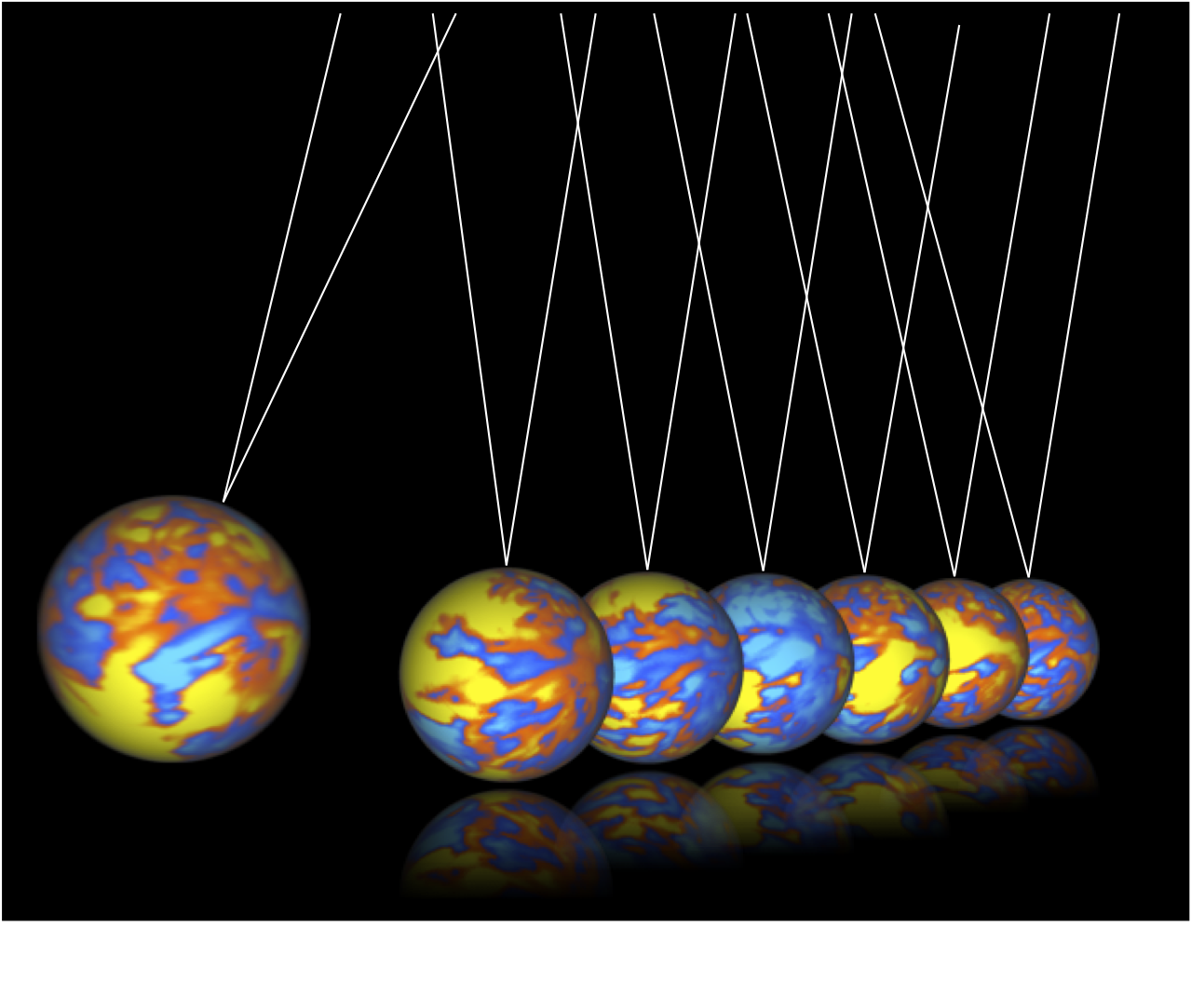The image shows homologous cortical resting-state networks of the macaque, identified by independent component analysis, inflated and wrapped onto spheres. The functional networks are arranged to resemble Newton’s cradle, an apparatus classically used to demonstrate conservation of momentum and kinetic energy. In this context, the image is meant to convey the ongoing dynamic flow of functional coupling within and between resting-state networks in which the brain spontaneously transitions through functional repertoires over time despite a static structural architecture. The dynamic diversity of network topology allows for the emergence of coherent network configurations that are necessary for changing cognitive conditions or task demands that require the generation of a global state dependent upon the integration of cortical and subcortical areas.
The Neuro Bureau
neuro-collaboration in action

